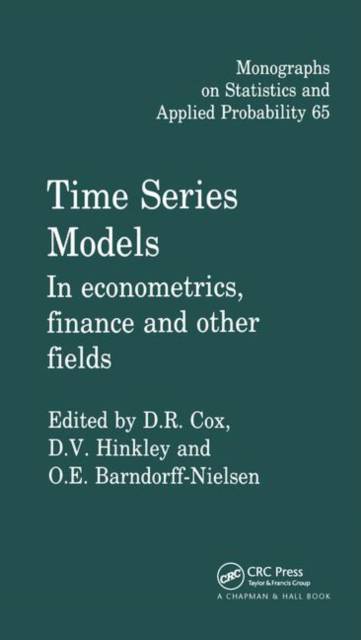
- Afhalen na 1 uur in een winkel met voorraad
- Gratis thuislevering in België vanaf € 30
- Ruim aanbod met 7 miljoen producten
- Afhalen na 1 uur in een winkel met voorraad
- Gratis thuislevering in België vanaf € 30
- Ruim aanbod met 7 miljoen producten
Zoeken
Time Series Models
In Econometrics, Finance and Other Fields
€ 86,45
+ 172 punten
Omschrijving
The analysis prediction and interpolation of economic and other time series has a long history and many applications. Major new developments are taking place, driven partly by the need to analyze financial data. The five papers in this book describe those new developments from various viewpoints and are intended to be an introduction accessible to readers from a range of backgrounds. The book arises out of the second Seminaire European de Statistique (SEMSTAT) held in Oxford in December 1994. This brought together young statisticians from across Europe, and a series of introductory lectures were given on topics at the forefront of current research activity. The lectures form the basis for the five papers contained in the book. The papers by Shephard and Johansen deal respectively with time series models for volatility, i.e. variance heterogeneity, and with cointegration. Clements and Hendry analyze the nature of prediction errors. A complementary review paper by Laird gives a biometrical view of the analysis of short time series. Finally Astrup and Nielsen give a mathematical introduction to the study of option pricing. Whilst the book draws its primary motivation from financial series and from multivariate econometric modelling, the applications are potentially much broader.
Specificaties
Betrokkenen
- Uitgeverij:
Inhoud
- Aantal bladzijden:
- 244
- Taal:
- Engels
- Reeks:
Eigenschappen
- Productcode (EAN):
- 9780367401320
- Verschijningsdatum:
- 17/10/2019
- Uitvoering:
- Paperback
- Formaat:
- Trade paperback (VS)
- Afmetingen:
- 140 mm x 213 mm
- Gewicht:
- 317 g

Alleen bij Standaard Boekhandel
+ 172 punten op je klantenkaart van Standaard Boekhandel
Beoordelingen
We publiceren alleen reviews die voldoen aan de voorwaarden voor reviews. Bekijk onze voorwaarden voor reviews.










